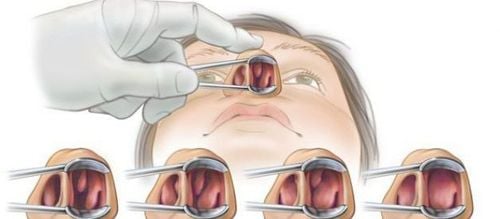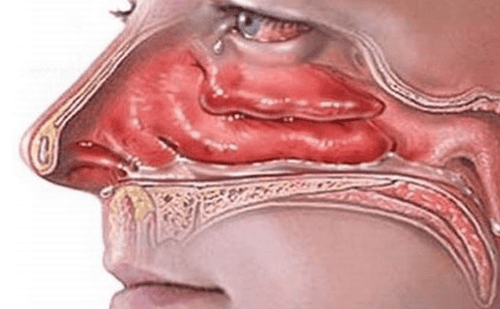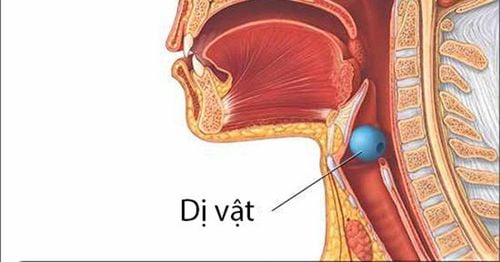This is an automatically translated article.
The nasopharynx is a small structure inside the nose that cleans and humidifies the air that passes through the nostrils before it reaches the lungs. They are made up of bony structures surrounded by vascular tissue and an outer mucous membrane, which can become swollen and inflamed due to allergies, irritation or infection, cause nasal congestion, and produce too much mucus leading to Congestion, difficulty breathing. The rhinoplasty technique is indicated in the cases of enlarged and enlarged nostrils, removing tissue and making breathing easier.1. What is a nose tuck?
Did you know that the nose is made with built-in air filters? Inside the nose are three pairs of tissue structures that filter, warm, and add moisture to the air you breathe. These structures are called the nasopharynx. A healthy nasal tip will do a good job of regulating the temperature and humidity of the air entering the nose. However, if the conjunctiva is inflamed, enlarged, or displaced, it can clog the nose and can make breathing difficult.
2. Why do you need to burn your nose?
Most people can have problems with their nose from time to time. These problems and the accompanying shortness of breath usually go away on their own or require medical treatment.
Some common and fixable causes of an enlarged nose include:
Allergies Infections Changing Weather Stress Medications Hormonal Changes But there are a number of causes Hypertrophy or deviated nasopharynx cannot easily be treated and may require ablation. These are the following:
Chronic infections Severe allergies Anatomical abnormalities of the nose The rhinoplasty technique is also often recommended for people with septal reconstruction, that is, surgery to correct the septum prevent deflection. A deviated septum is an abnormal displacement of bone and cartilage between the nostrils. It can cause compression of the nasal tubes and difficulty breathing. Rhinoplasty can help widen the airways of a person with septal orthopedic surgery.

Nguyên nhân có thể khắc phục được của tình trạng phì đại cuốn mũi bao gồm dị ứng
3. How is the rhinoplasty technique performed?
There are several ways to reduce the size of the nose bridge. Several less invasive methods are being used.
3.1. Nasal ablation with coblator and ultrasound
In some cases, doctors recommend surgery to reduce the bunions without removing any more bone or underlying tissue.
To do this, a surgeon uses a special needle-like device to heat the nasal tubes using a heat source or energy waves. This causes scar tissue to form, reducing the size of the nose. The process usually takes about 10 minutes and can be done under local anesthesia in specialized clinics. A local anesthetic will be injected into the tissues in the nose using a specialized needle. Patients usually do not need special preparation. These procedures are usually used in less severe cases.
3.2. Nose resection surgery
In other cases, the doctor may recommend surgical removal of parts of the nasopharynx. These procedures are usually performed in an operating room under general anesthesia using anesthetic gas or anesthetic drugs that are injected into a vein.
When preparing to burn the anesthetic, the patient will be instructed not to eat or drink before, usually starting the night before. Patients should also avoid taking medications containing aspirin or ibuprofen for two weeks before surgery to minimize the risk of bleeding. During a bunion ablation, a surgeon makes an incision along the nasolacrimal ducts to remove some of the bone below them, in order to reduce their overall size. Your doctor may also use a small hand-held device to scrape away some of the tissue around the bridge of your nose, helping to open up your nasal passages and airways.
Surgery to remove the bone or underlying tissue around the nasolacrimal ducts is usually reserved for severe cases of nasolacrimal hypertrophy. It is usually done during the correction and shaping of the septum.
4. How does the patient recover after burning the nose?
The recovery time is different for each type of rhinoplasty. For less invasive methods of rhinoplasty, recovery is usually quick and painless. In about three weeks, the new scar tissue in your nose should be fully recovered. For the more invasive type of rhinoplasty, recovery takes three to six months. For up to a week after surgery, you may need to cover your nostrils with gauze to keep the tissues in place. Over time, your nasal tissues will gradually heal.
To avoid possible bleeding and edema, avoid strenuous activities and limit blowing your nose for a few weeks after surgery. Your doctor may also recommend that you keep your head elevated when you sleep and wear clothing that ties up the front - instead of clothing that covers your head - to avoid irritating your nose.

Thời gian phục hồi khác nhau đối với từng loại kỹ thuật đốt cuốn mũi
5. Does burning the nose cause any complications or not?
Complications are less likely and less severe with less invasive rhinoplasty procedures. In about three weeks, you may experience scabs at the wound or dry nose. At this time, you should use physiological saline nasal drops and antibiotic ointment to help control these complications. Complications are common and can be more severe with invasive rhinoplasty procedures and the removal of underlying bone or tissue. Possible complications include:
More severe pain Bleeding Swelling Irritation Dry nasal cavity Infection There is also a chance that the nasolacrimal tissue may regrow after surgery, so it is necessary to undergo subsequent decongestant treatment.
6. What is the prognosis of the rhinoplasty technique?
The goal of rhinoplasty is to reduce the size of the turbinate without removing too much tissue. The lack of tissue can cause the nasal cavity to become very dry and scab easily. In some cases, a drooping nose can grow back, requiring repeat surgery to reduce their size. In most cases, reducing the amount of nasopharynx succeeds in opening up the airways and making breathing easier. By following your surgeon's pre- and post-operative care instructions, you can speed up the healing process and maximize your results.
In summary, nasopharynx is a minimally invasive technique that causes little pain and doesn't cause bleeding. Nose burning helps to effectively narrow the nasopharynx and improve the quality of the airways for the patient. .
Vinmec International General Hospital is a general hospital that has the function of examining and treating ENT diseases such as sinusitis, rhinitis, allergic rhinitis, chronic rhinitis, tonsillitis, and pain. throat, tinnitus and many other diseases. At Vinmec, we have also performed endoscopic diagnosis and treatment with modern medical methods for ear, nose and throat diseases, which not only brings high efficiency but also minimizes complications of recurrent disease. The great success is because Vinmec is always fully equipped with modern facilities, examination and treatment procedures are carried out by a team of experienced and qualified doctors that will bring about treatment results. optimal for customers.
Please dial HOTLINE for more information or register for an appointment HERE. Download MyVinmec app to make appointments faster and to manage your bookings easily.













